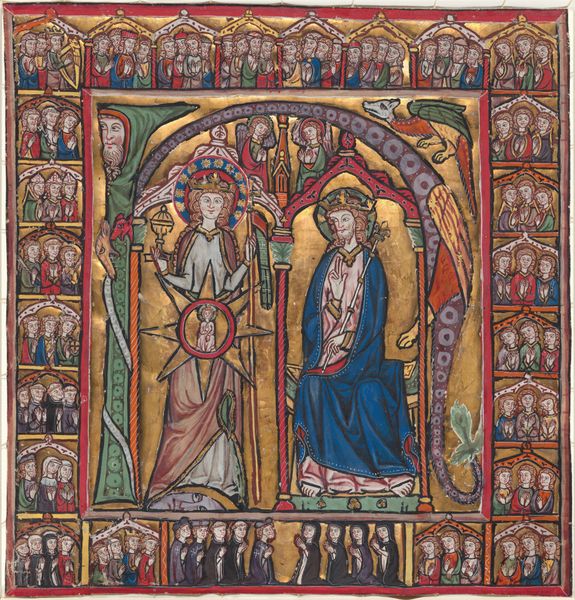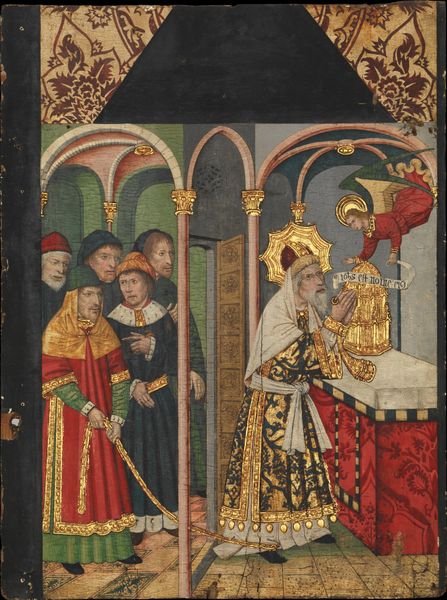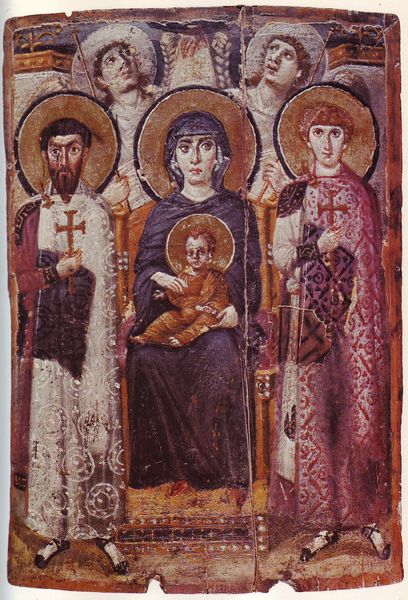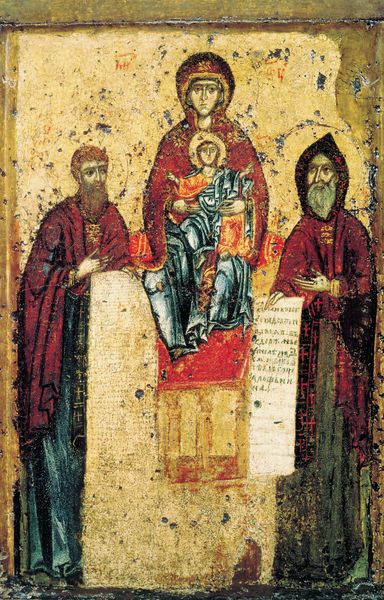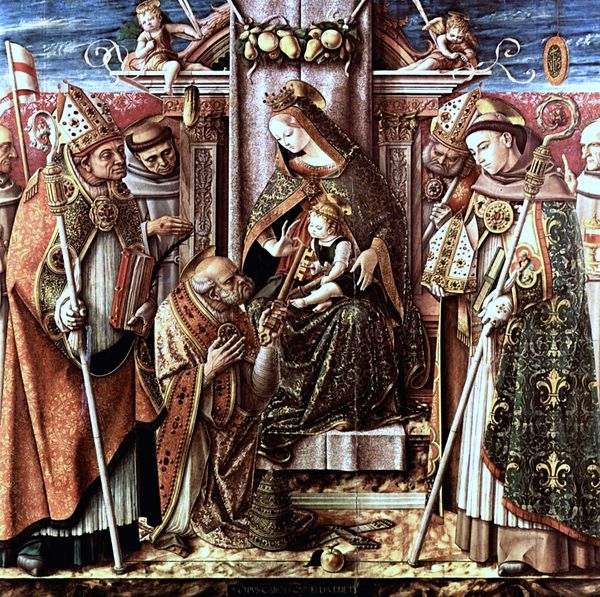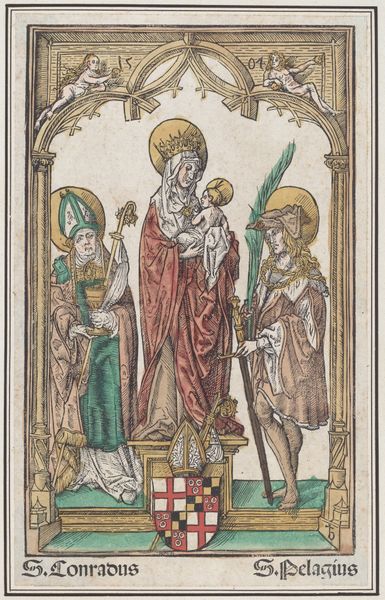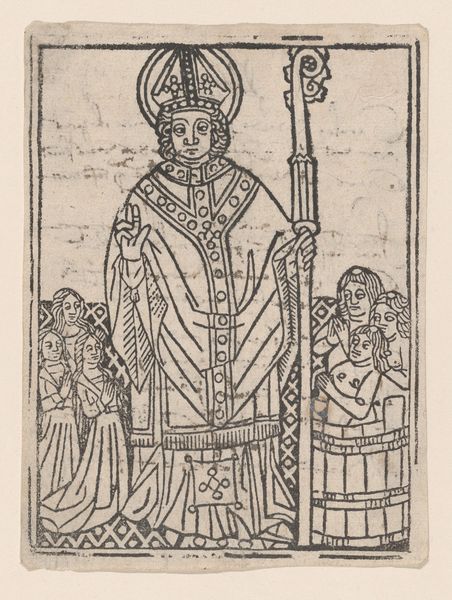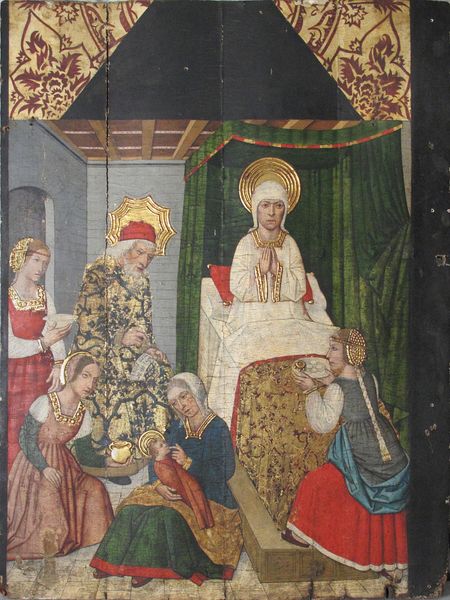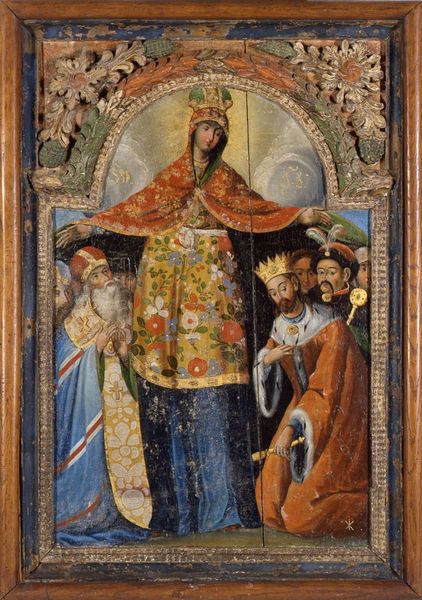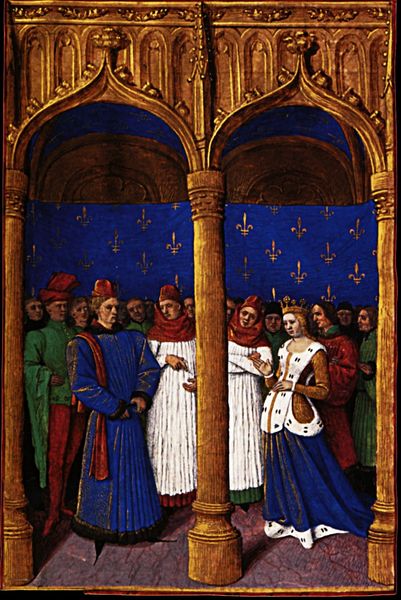
silk, textile
#
medieval
#
silk
#
landscape
#
textile
#
figuration
#
genre-painting
#
northern-renaissance
Dimensions: 93 1/2 x 47 in. (237.49 x 119.38 cm) (object part, left)94 1/4 x 47 in. (239.4 x 119.38 cm) (object part, right)
Copyright: Public Domain
Curator: Look at the details on this tapestry, "Courtly Personages in a Landscape," likely made between 1520 and 1525. Its craftsmanship offers insight into Northern Renaissance sensibilities and aristocratic display. What is your first impression? Editor: I'm struck by the density. A wall of figures and finery set against that soft landscape. The sheer accumulation of detail almost feels suffocating; what narratives were textiles meant to communicate? Curator: Indeed! Textiles like these were potent symbols. The figures represent an ideal of courtly life. Their garments, meticulously rendered in silk, spoke volumes about social standing, while the figures evoke a dream world rooted in social and cultural aspirations. Editor: Aristocratic self-fashioning feels like a continuous thread. Are they portraits, or rather, a collection of types? Their gazes all feel strikingly distant, removed from the labor needed to support the display. What does the landscape offer to these figures and to the audience viewing it? Curator: The faces are less individualized portraits and more like types drawn from popular imagination and artistic convention. This adds to its power as a symbol accessible to a broader audience, not just the elite. I interpret this landscape to invite the courtly figures into nature, framing a dream vision that has symbolic connotations and offers solace. Editor: Do you see it as solace? Or more a symbolic backdrop emphasizing power dynamics? The way they’re positioned, almost blocking out nature…it reinforces their dominance over it, a visual representation of their socio-economic position. They control the land, and therefore their legacy. Curator: That is an astute reading! Symbolically, it could definitely function on both levels. Perhaps it reflects the ambiguity inherent in courtly life itself - the idealized vision versus the realpolitik that sustained it. Editor: Absolutely. I’m fascinated by how even seemingly benign landscapes were always deeply entangled with ideologies of power. The detail afforded to the figures vs the stylized depiction of nature implies an inherent anthropocentrism. Curator: A powerful closing perspective, one that helps bridge a piece like this to contemporary conversations. Editor: Exactly, reminding us these textiles, despite their apparent beauty, remain freighted with the social and political tensions of their time.
Comments
minneapolisinstituteofart almost 2 years ago
⋮
This is a fragment of a larger tapestry and therefore we can only speculate from the elaborate clothing and the numerous people depicted that this was a courtly gathering. It is possible that it represented an international meeting, as the scimitar-like sword worn by the missing figure at the left may identify an Eastern visitor to a Western court.
Join the conversation
Join millions of artists and users on Artera today and experience the ultimate creative platform.
